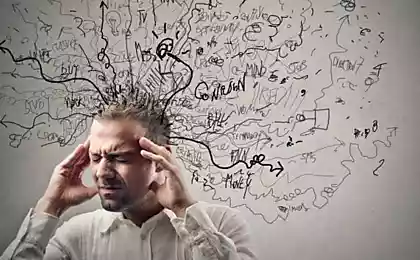101
14 Tips to Deal with Strong Emotions
14 ways to curb the emotional element
Scientific Guide to Management of the Inner World

Imagine a ship captain who suddenly finds himself in the middle of an emotional storm. Waves of anger descend on the deck, winds of anxiety tear sails, and a fog of depression blankets the horizon. Most people in this situation just grab a lifeline and pray that the storm will end soon. But what if I told you that there was a way not just to survive an emotional storm, but to become its master?
Modern neuroscience has discovered an amazing fact: our brain has incredible plasticity. This means that we can literally rewrite our emotional responses by creating new neural pathways. Women who have mastered the art of emotional control do not suppress their feelings; they transform them into a source of strength and wisdom.
The Secret of Emotional Masters
Studies show that people with developed emotional intelligence are 58% more likely to succeed in any field of activity. They are less likely to suffer from burnout, have stronger relationships, and live longer.
Revolutionary Emotional Management Techniques
1st
The Alchemy of Awareness: Turning Chaos into Clarity
When an emotional storm grips you, the first step is not to run away from it, but to face it. Say out loud, “I feel angry, and that’s okay,” or “My anxiety is a signal I’m ready to decipher.” Simply naming an emotion activates the prefrontal cortex, which is responsible for rational thinking.
2.
The power of a trusted listener
Find your “emotional ally” – someone who can listen without judgment. Before talking, warn: “I need to talk, don’t give advice, just be there.” Use "I-messages": instead of "you piss me off," say "I feel frustrated when." ?

3
The Stop Crane Technique: An Instant Reboot of Consciousness
When emotions are ready to explode, mentally shout “Stop!” as loudly as possible. Then perform a physical action: wash yourself with icy water, do 10 squats, or look out the window at the sky. This technique breaks the automatic trigger-response chain and returns control.
Emotions are energy in motion. The task is not to stop them, but to channel this energy in a constructive way.
4.
Safe release of emotional energy
Emotions require physical expression. Go for an intense run, turn on your favorite music and dance to exhaustion, or find a deserted place and scream from the heart. Creativity works, too: sculpt from clay, draw abstractions, write poems—any way to pour inner energy outward.
5
Meditation: Reprogramming the Inner World
Meditation is not sitting in the lotus position, but training attention. Lie down comfortably, close your eyes and focus on breathing. When the thoughts begin to attack, gently say to them, “Thank you, I noticed you,” and go back to watching the inhalations and exhalations. Even 10 minutes a day will change the structure of your brain.
6
The magic of change
Emotions stick to places. If you are homesick, go outside – even five minutes of fresh air will reset the nervous system. Take a contrast shower: hot water relaxes the muscles, cold water activates the parasympathetic nervous system. Water literally washes away the emotional charge.
7
Hunting for Triggers: Exposing Hidden Mechanisms
After an emotional explosion, conduct a detective investigation. What exactly bothered you? Does it remind you of situations from the past? Triggers are unhealed emotional wounds that respond to similar stimuli. Awareness of the trigger is the first step to getting rid of it.

8.
Breathing 4-7-8: Instant calming of the nervous system
This technique activates the vagus nerve and triggers a relaxation response. Inhale through the nose for 4 counts, hold your breath for 7 seconds, slowly exhale through the mouth for 8 counts. Repeat 3-5 times. Within a minute, you will feel the tension leaving your body.
Important: If the breathing technique causes dizziness, reduce the score to a comfortable rhythm or simply breathe deeply and slowly.
9.
The Diary of Feelings: A Map of the Inner World
Keep records uncensored: "Today I feel furious because ..." In the process of writing, the right hemisphere of the brain is activated, responsible for creativity and intuition. Gradually, you will begin to notice patterns in your reactions and find ways to transform them.
10.
Affirmations: Subconscious Programming
Create personal power mantras: "I'm calm and in control," "It's temporary, I'll get through this," "My emotions are information, not orders." Say them out loud, looking in the mirror, or write them down on paper. Repetition reprograms subconscious beliefs.
11.
Strategic pause: time for reflection
Set a rule: no important decisions in a state of emotional heat. Set a timer for 20-30 minutes – during this time, the first wave of emotions subsides, and you can think rationally. If a pause is not possible, take five deep breaths before the reaction.
12.
Art Therapy: When Words Are Powerless
Take pencils and draw everything that comes to mind: abstract lines, geometric shapes, portraits of emotions. Turn on the music and move as your body asks. Creativity bypasses conscious blocks and allows emotions to find their way through art.
13
The Physiology of Emotions: Caring for the Body
Hunger, lack of sleep and hormonal jumps increase emotional reactions at times. If you’re exploding over trifles, check your basic needs: Have you eaten, slept well, or hurt? Sometimes a glass of water or a light snack work wonders with mood.
14.
Specialist assistance: when you need support
If emotions regularly get out of control and interfere with life, this is a signal to see a psychologist or therapist. The specialist will help to understand the underlying causes of emotional storms and teach personal techniques for managing feelings.
The Path to Emotional Mastery
The goal is not to become an emotional robot, but to turn your feelings from a chaotic element into a source of wisdom and strength. Each mastered technique is another tool in your arsenal of emotional mastery. Start with one or two techniques that resonate with you the most, and gradually expand your repertoire.
Glossary of terms
Emotional intelligence
The ability to recognize, understand and manage one’s emotions, and to interact effectively with others’ emotions.
Prefrontal cortex
The area of the brain responsible for planning, decision-making, impulse control and emotion regulation.
Triggers.
External stimuli (situations, words, smells) that automatically trigger strong emotional responses related to past experiences.
Parasympathetic nervous system
The part of the autonomic nervous system responsible for relaxation, recovery, and the state of "rest and digestion."
Neuroplasticity
The ability of the brain to change its structure and function in response to experience, forming new neural connections.
Affirmations.
Positive statements that, when repeated regularly, help change negative beliefs and subconscious programs.
Art therapy
A method of psychotherapy that uses creative processes (drawing, sculpting, music, dance) to express and work out emotions.
vagus nerve
The longest cranial nerve, which connects the brain to internal organs and plays a key role in activating the relaxation response.
11 things that will happen when you stop trying to please everyone
11 “boring” habits of rich people























